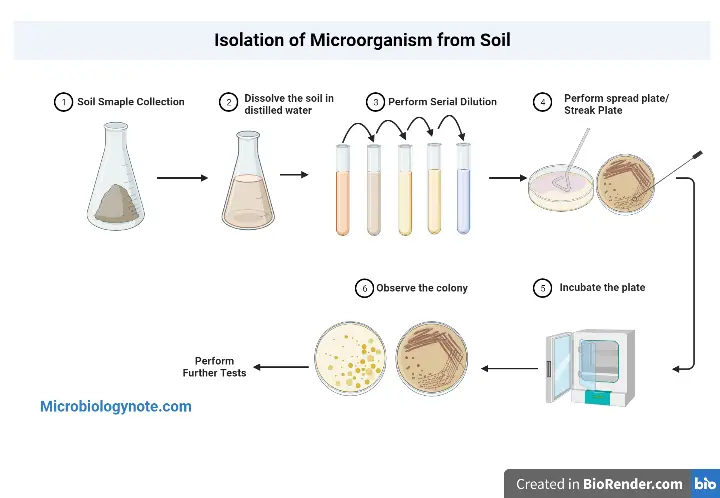Table of Contents
Soil contain different types of microorganisms which are listed below;
- Bacteria: Bacteria is the key soil workforce. They are the last stage in the process of breaking down nutrients before releasing them into the root zone of the plant. In fact, they are the final stage of breaking down nutrients. Food and Agriculture Organization once declared that “Bacteria may well be the most valuable of life forms in the soil.”
- Actinomycetes: These were classified as fungi and perform similar roles in soil. However, certain actinomycetes are predators that can hurt the plant, while other species that live in the soil may act as anti-biotics for plants.
- Fungi: Similar to bacteria, fungi are also found in the root zone and provide nutrients to plants. For instance, Mycorrhizae is a fungus that aids in the absorption of nutrients and water by plants and roots to supply amino acids, and other nutrients.
- Protozoa: Protozoa are bigger microbes that are awe-inspiring to consume and be at the mercy of bacteria. Actually, the nutrients consumed by the bacteria get released into the air when protozoa eat bacteria.
- Nematodes: Nematodes are microscopic worms that reside around or within the plant. Some nematodes can be predators but others have a beneficial effect, consuming pathogenic nematodes and releasing nutrients to the plant.
Principle of Isolation of Microorganisms from Soil
During this process, the soil sample is collected from the study site. After that, the soil sample is dissolved in distilled water and then serial dilution is performed. Then the spread-plate/streak plate method is performed on the sample with the highest dilution factor. The spread plate is incubated at an optimum temperature (based on the type of microorganism you want to isolate). After incubation microbial colony will form of your desired microorganisms.
Objective
- To isolate microorganisms from a soil sample
Requirement
- Study Site
- Soil sample
- Agar Media (The various media that can be employed to isolate soil-borne bacteria are Nutrient agar and Soil-extract Agar, Asparagine-mannitol, Plate count agar, and Reinforced Clostridial medium, the Yeast extract mannitol agar is dependent on the type of bacteria you are trying to identify. In the case of E. Coli, you may make use of Chrome Agar)
- Distilled water
- Test tubes.
- Petri Plates
- Pipette
- Incubator
- Autoclave
- Laminar Airflow
Procedure
- First of all, collect the soil sample from the study site (it will be best if you collect more than one soil sample from the study site). Then transfer it to the laboratories.
- In laboratories, removes the other debris or rocks, or large particles from the soil sample.
- Dissolve the soil sample in sterile distilled water, and make sure the soil sample is uniformly dissolved in water.
- After that perform the serial dilution.
- Prepared the agar plate. Select the media based on the types of microorganisms you want to isolate.
- Nutrient media, such as tryptone yeast extract, yeast extract mannitol, and rhizobial minimal media have been found to be extremely suitable for the growth of rhizobia.
- EMB Agar is utilized in the detection and removal of pathogenic bacteria. It has digested meat proteins as the source of organic nutrients.
- To isolate fungal media, antibiotics must be utilized to prevent bacterial contamination. Sabouraud’s Dextrose Agar and potato-dextrose agar are popular media.
- Select the highest dilution sample and spread it over the agar plate.
- Incubate the inoculum plate in an incubator at an optimum temperature using an incubator (temperature may vary based on the types of microorganisms you want to isolate).
- After incubation, the colony will form of your desired microorganism.
- Perform further tests for the identification of the strain, e.g. staining method.

Result
After 24 hours of incubation colonies of your desired microorganism will appear on the plate.
Precautions
- All the glassware must be sterilized using an autoclave.
- It’s important to select media in which your desired microorganism will grow.
- All the procedures will be performed in Laminar airflow to reduce the risk of contamination.
- Wear gloves during performing the test.
- Choose the highest dilution factor for plating, it will give you a few colonies on an agar plate.
Application
- Use for isolation of bacteria, fungi, etc from the soil.
- Use to study the microbial content of a particular region.


